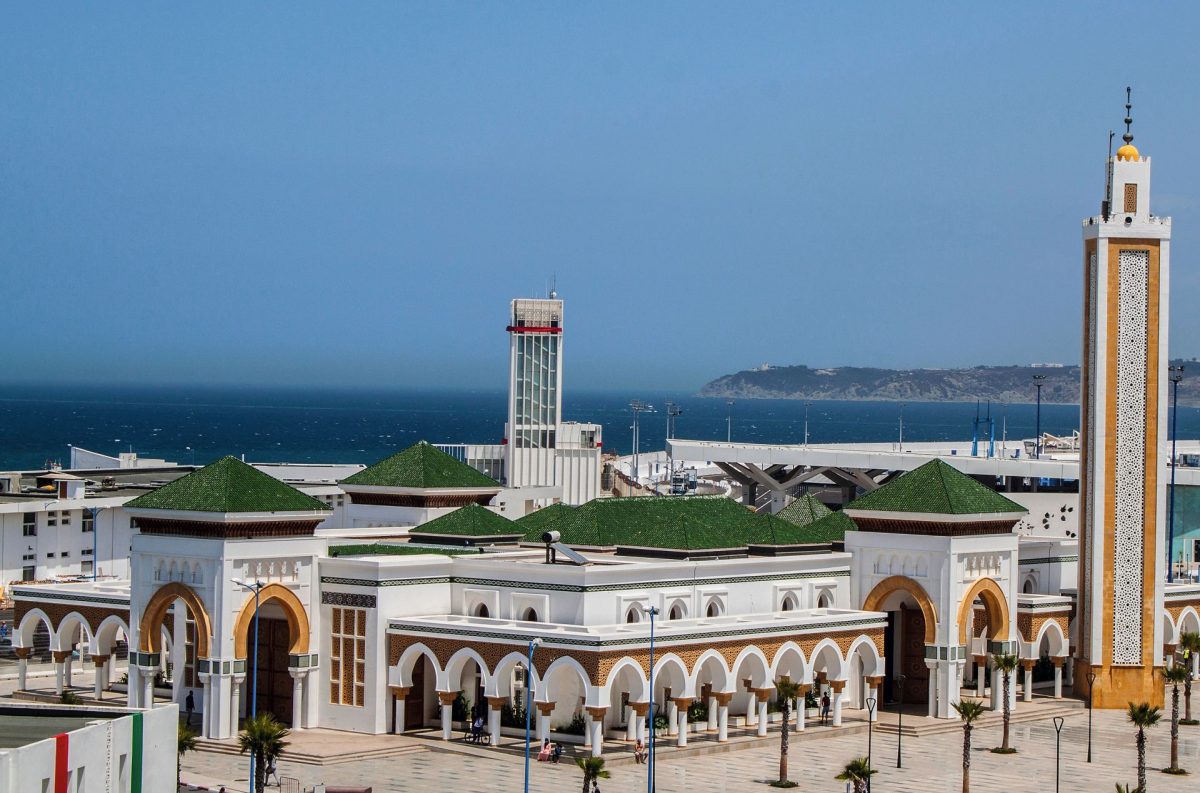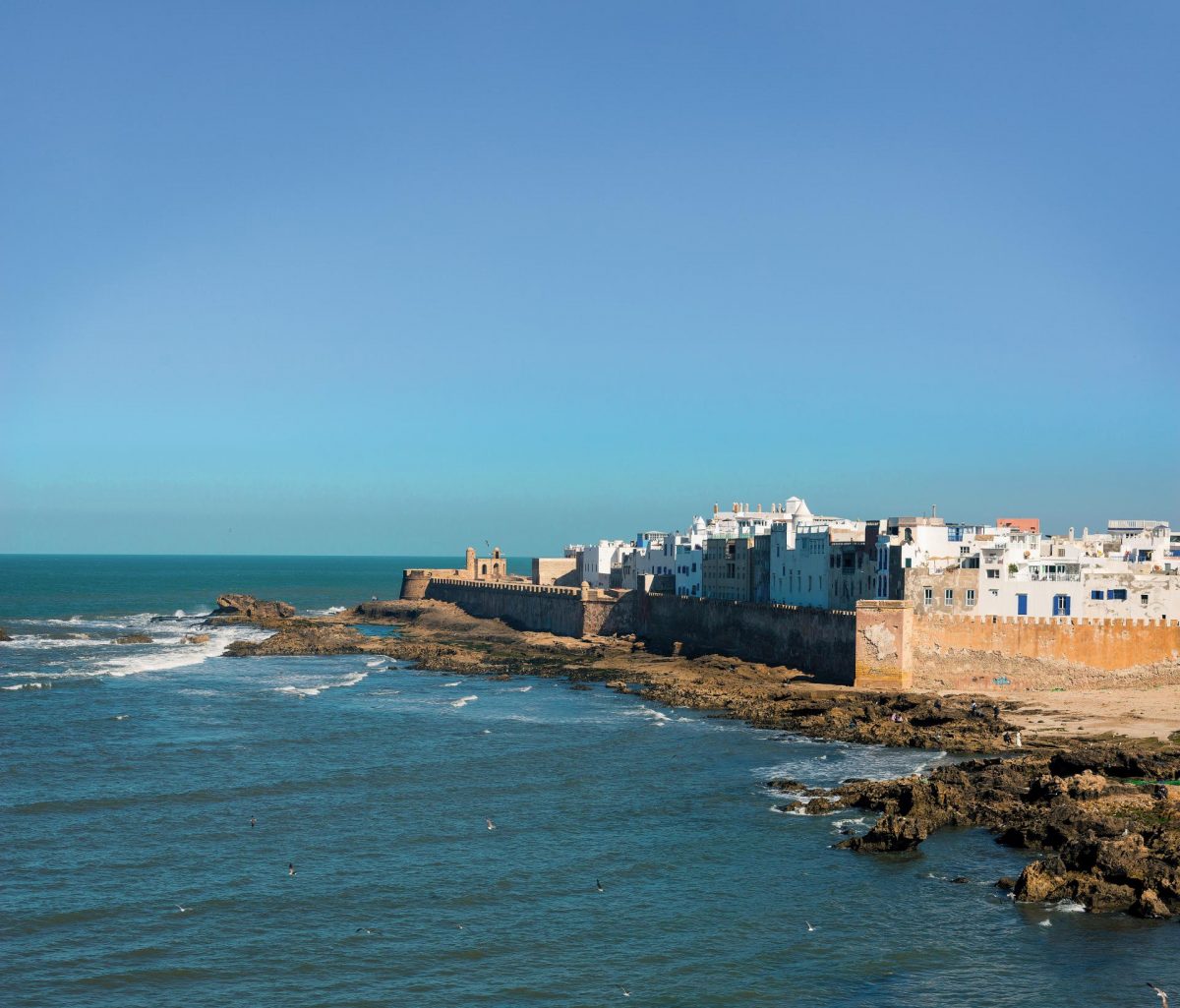Discover Morocco’s three most vibrant and distinctive coastal cities, perfect for an unforgettable autumn getaway.

Casablanca
Located 320 km south of Gibraltar, Casablanca stands as Morocco’s largest and most populous city, serving as the country’s economic powerhouse and the primary Atlantic seaport in Northwest Africa. The ambiance in United Nations Square and the skyscraper-lined business district mirrors that of any modern metropolis, complete with the hustle and bustle of city life. Eastern charm is also present: the Medina and the magnificent Hassan II Mosque, boasting a retractable roof and the world’s tallest minaret at 200 m, are major tourist attractions. However, the main draw for romantics visiting Casablanca is the captivating aura of the 1942 film of the same name. Whether strolling through colonial quarters adorned with architectural masterpieces by French Silver Age designers, enjoying an evening at the Cinéma Rialto where Edith Piaf once performed, or experiencing jazz improvisations at an art opening, echoes of the iconic film can be found everywhere. A visit to the legendary Rick’s Café, where key scenes from the melodrama unfolded, is an almost mandatory part of any itinerary. The second-floor room with its open gallery maintains the 1930s–1940s ambiance, while the gin bar features live piano music from that era. Humphrey Bogart and Ingrid Bergman grace the big screen, where the timeless film plays on a continuous loop. After dinner, take a stroll along the Corniche promenade, feel the fresh sea breeze on your face, and watch the “huge ball of fire” sink into the Atlantic Ocean while whistling the melancholic tune of “As Time Goes By” for hours on end.
Tangier
The port of Tangier, situated on the southern shore of the Strait of Gibraltar, is often hailed as the gateway to Morocco and, indeed, to all of Africa. Straddling both the Atlantic Ocean and the Mediterranean Sea, the city offers beaches and waters to suit every preference. Surfers flock to the cooler, windier ocean side, known for its consistently good waves. The Mediterranean coast, with its calmer and warmer waters reaching up to 25°C in summer, boasts a bathing season that extends almost until November. Tangier’s diverse history of rule by Romans, Arabs, and European states is reflected in its varied architecture, tastes, and overall lifestyle. The historic city center, encompassing the Kasbah quarter-fortress with its Medina and former sultan’s palace (now home to the Museum of Moroccan Arts and the Museum of Antiquities featuring the famous Voyage of Venus mosaic), preserves the atmosphere of the traditional East. The influence of northern neighbors is evident: Place de France with the iconic Grande Café de Paris, Gran Socco square with its fountain and the oldest cinema, Cinéma Rif, and the snow-white Anglican Church of St. Andrew all evoke the Riviera. It’s no wonder this picturesque urban blend so inspired Henri Matisse, who created his Moroccan cycle masterpieces in Tangier. The city’s modern side is represented by numerous art spaces, from painting galleries to the Rolling Stones School of Music, attracting creative intellectuals from around the world for their vacations.

Essaouira
Another gem along Morocco’s Atlantic coast lies further south. Essaouira (from the Arabic Es-Saouira, meaning “beautiful fortress”) is a city of winds, fishermen, and unique aesthetics. Once a haven for pirates and smugglers, it has now become a wellspring of inspiration for poets, artists, and musicians. Behind the imposing fortress walls, ancient houses are tightly packed — not in the typical sand color of the Maghreb but dazzling white with bright blue windows. The fishing boats are also festively painted in shades of blue. The combination of these elements with the deep aquamarine of the ocean, white surf, and seagulls creates a fantastic panorama that can be admired for hours from a riad rooftop. The city has served as a filming location for Game of Thrones, Othello, and Kingdom of Heaven. In the Medina, cutting-edge art galleries intermingle with traditional shops, offering a range of modern Aladdin’s treasures — from avant-garde creations to vintage Berber rugs and authentic Tuareg jewelry. Essaouira was a hippie magnet in the 1960s, attracting the likes of Jimi Hendrix and Bob Marley. Today, the city still buzzes with street performers and art cafes featuring excellent live music at every turn. The 6-km-long beach offers opportunities for horseback riding or windsurfing, with ideal conditions for the latter. As evening falls, indulge in the local seafood cuisine, from spicy, thick harira soup and a wide array of shellfish (Morocco is a world leader in oyster farming) to fried delicacies made from the day’s freshest catch.

Photo: shutterstock.com


